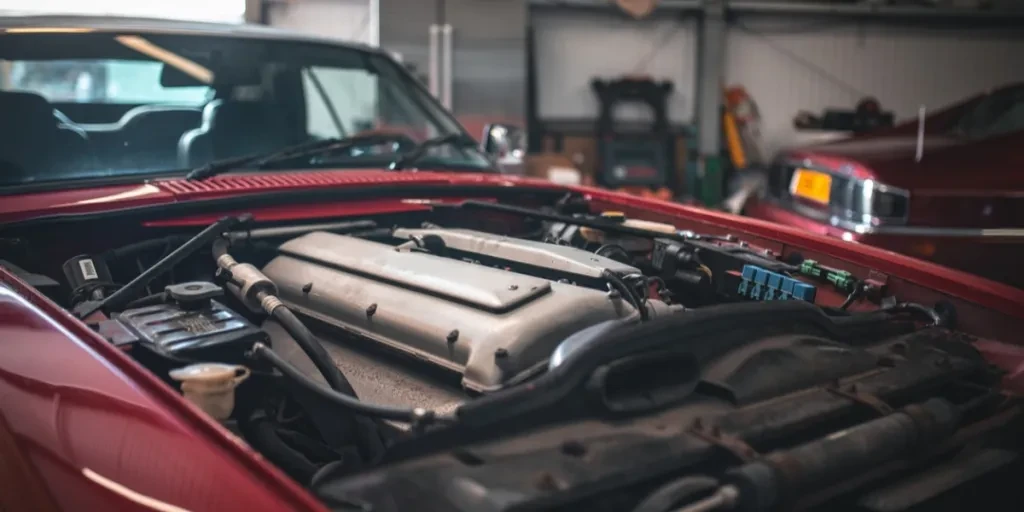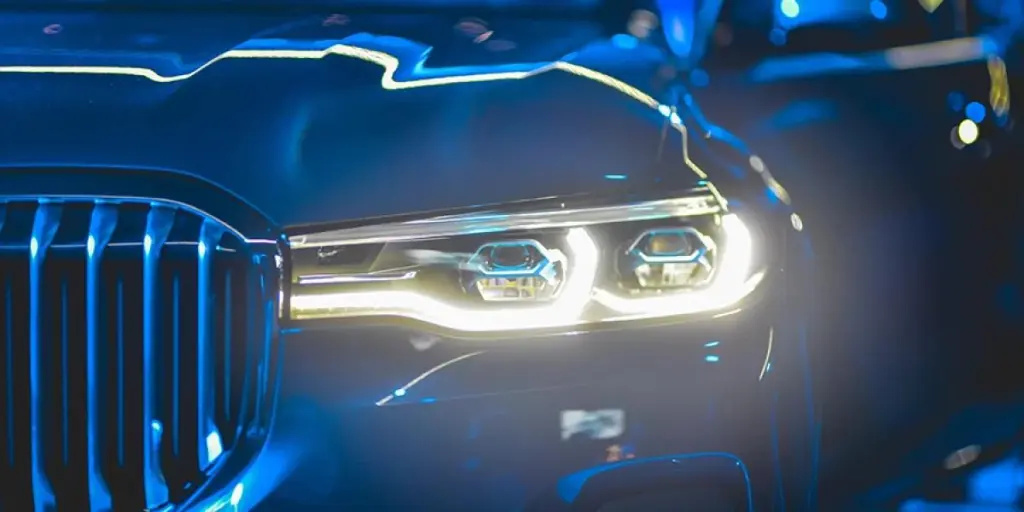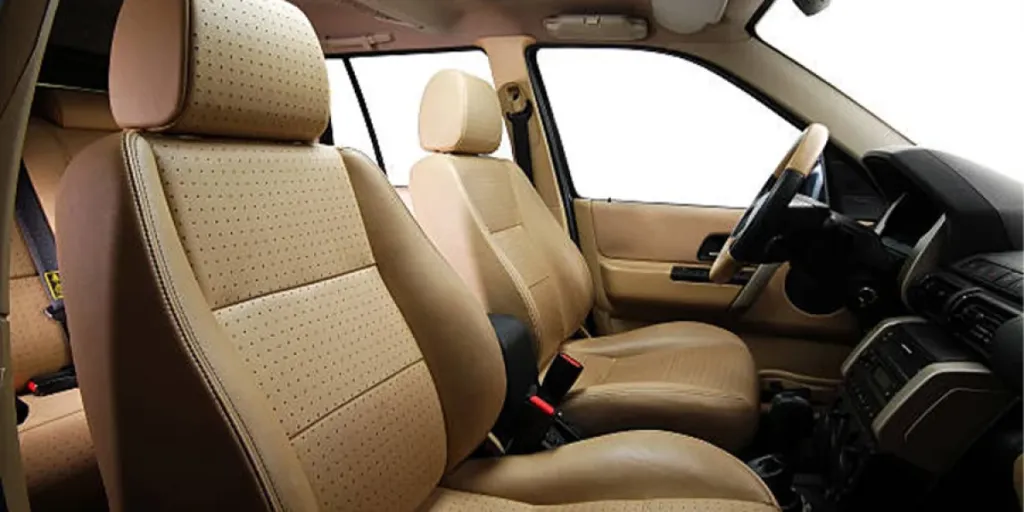Ever had your car overheat out of nowhere? That sinking feeling usually points to one small but mighty part: the water pump. Knowing how to test the water pump on a car isn’t just smart; it can save your engine from serious damage. Most folks don’t think about the pump until it fails, but a simple check can go a long way. In this guide, you’ll learn how to spot the signs, test it properly, and understand what to do if something’s off, even without a mechanic’s badge.
Table of Contents
How does a car water pump work?
What causes an auto water pump failure?
How to diagnose auto water pump failure
Final words
FAQS
How does a car water pump work?
Most cars’ average operating engine temperature ranges from 190 to 220 degrees Fahrenheit, which can exceed that limit. The continuous build-up of heat in engines can lead to serious engine damage. Fortunately, water pumps are designed to engage the impeller and push coolant through the cooling system, helping maintain safe temperatures and prevent overheating.
The water flow path includes the heater core, cylinder heads, intake manifold, radiator, connecting hoses, and lines.
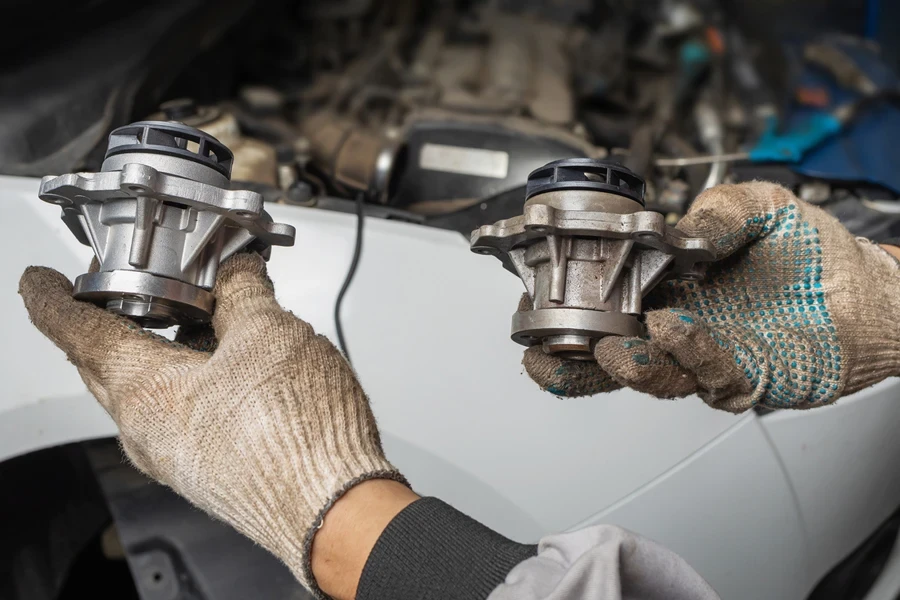
The water pump, powered by an impeller blade and centrifugal force, pushes hot water through the engine and sends it back to the radiator. Then, the cycle repeats.
Depending on the vehicle, a car’s water pump may be driven by a serpentine, timing, or drive belt. Many pumps also feature a weep hole that allows small amounts of coolant to leak, an early sign of failing water pump seals. If leaks are frequent, they may indicate the need for a water pump replacement.
What causes an auto water pump failure?
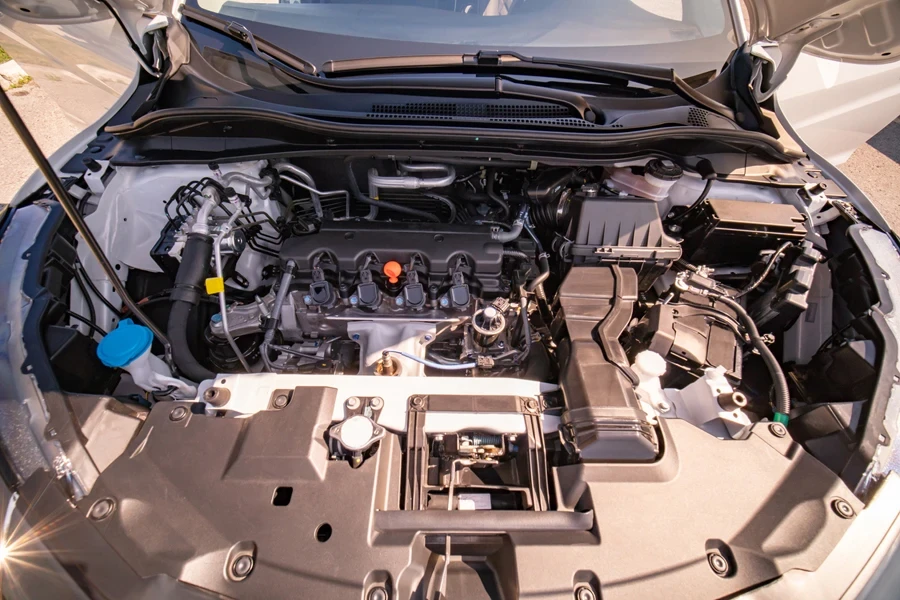
A failing water pump can lead to serious damage if not detected early. Vehicles with water pump malfunction symptoms, such as overheating, coolant leaks, or noise, should be inspected quickly to avoid bigger problems. Below are common causes of failure:
- Faulty seal: Leaving a car idle for too long can cause a coolant leak, rust, or seal wear. A bad water pump seal often leads to failure.
- Damaged or Broken belt: A cracked or overly tight serpentine belt, timing belt, or drive belt puts extra pressure on the pump, damaging its pulley and leading to a bad pump.
- Loose drive pulley: A wobbly pulley leads to belt misalignment and bearing issues, which can cause the pump to fail.
- A damaged impeller or worn bearing leads to excessive heat, stopping the pump from working correctly.
- Corrosion inside the cooling system can cause leaks. To refill coolant, use distilled water, not tap water.
In short, consumers must inspect the pump regularly for leaks, wear, cracks, and defects. They must also replace the pump and drain or flush the coolant occasionally.
How to identify a bad water pump
Some parts of the car’s water pump, like the bearing or pulley, can wear out or fail over time. Here are signs to help you know when a bad water pump might be the issue:
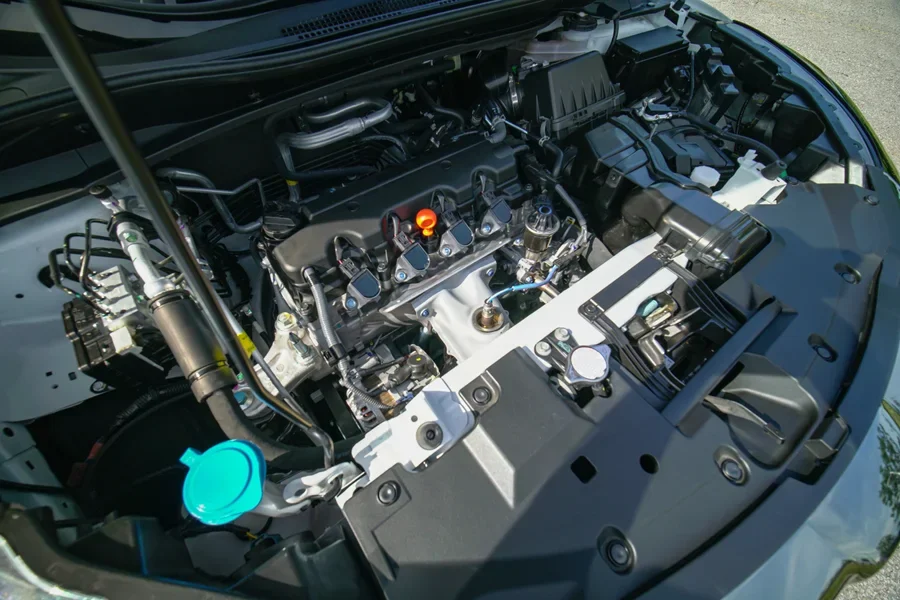
- If you spot puddles under your car, don’t ignore them. These could be signs of a coolant leak, especially if the fluid is red, green, blue, or orange. Unlike the clear water from your A/C, coolant usually pools near the bottom hose, around the coolant pump, or beneath the car’s water pump, which often signals a failing water pump.
- When your engine temperature climbs quickly or the warning light comes on, it’s usually a sign of trouble in the cooling system. In many cases, a bad water pump or a stuck thermostat is to blame.
- Whining, grinding, or squealing sounds coming from the engine may point to a worn-out bearing, a slipping belt, or a loose pulley. A damaged impeller inside the pump may also create unusual noise before the pump gives out.
- If your coolant warning light comes on, or the car struggles to maintain power or temperature, those are classic signs of coolant leaks or water pump failure symptoms. Ignoring these early signs can lead to serious engine damage.
How to diagnose an auto water pump failure
As a water pump dealer, it’s important to acquire knowledge on how to diagnose car engine issues. One such skill is knowing how to test car water pumps in case customers require professional advice or services.
Diagnosing water pump operation
Water pump diagnostics aim to evaluate the pump’s performance and efficiency. Here are the steps to take:
- Set the transmission at neutral or automatic, then apply the parking brakes.
- Eject the radiator cap and start the engine.
- Allow the engine to run for nearly twenty minutes to attain its working temperature.
At this point, the coolant should flow through the radiator hoses and into the engine. But if this doesn’t happen, it may mean the thermostat refused to open, the radiator is clogged, or the water pump is faulty.
If the water pump is the issue, replace the old radiator cap with a new one. Then, get a rag and force it into the upper radiator hose that leads to the engine. After removing the radiator’s blockage, check if the water pump functions by the coolant rushing out. If that doesn’t happen, use a rag to squeeze into the upper radiator hose while someone steps on the accelerator. Then, release the radiator hose to check for coolant flow. If the coolant doesn’t flow through the upper radiator hose, it is faulty and can’t circulate.
If the engine is still running, enter the passenger sector and switch on the heater to maximum. If it does not produce any heat, it might be a stuck-closed thermostat issue, a clogged radiator, or a failing pump.
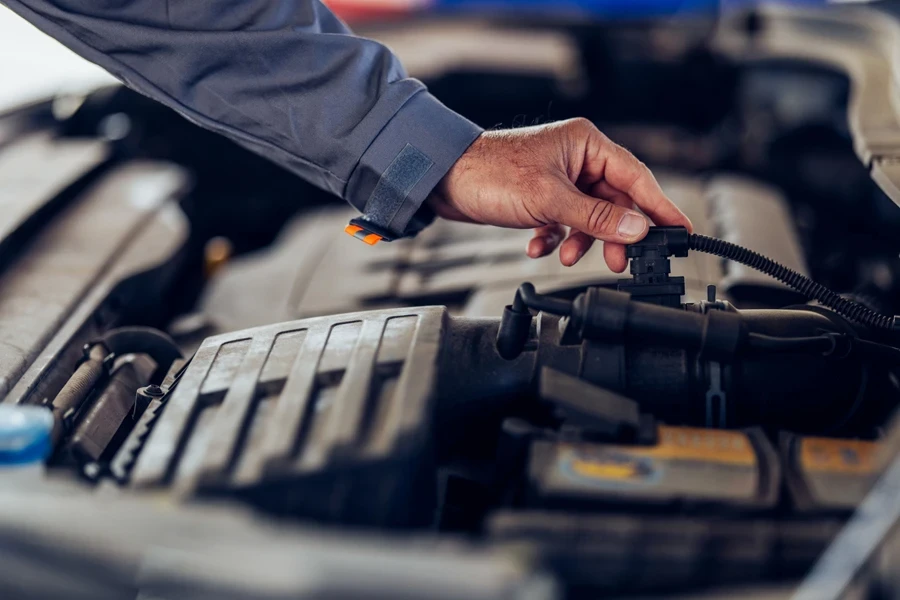
Diagnosing bearing failure
Bearing failures can lead to serious engine damage, and one of the main signs of a failingwater pump is unusual movement in the water pump shaft. Below are some ways to diagnose faulty bearing problems and resolve them quickly.
Bad bearings are often detected by their noise. A faulty bearing may squeal, howl, or produce a grinding sound when the engine is running. These noises are clear warning signs of a problem. Even if there’s no noise, inspecting the water pump regularly is smart. Loosen the bolts with a large screwdriver, separate the source, and start the engine.
Place the sharp end of the screwdriver or a hose against the water pump housing and bring your ear to the other end. This helps you listen for rough wheeling sounds or other noises caused by bearing damage.
Also, inspect the pulley and water pump shaft for irregular movement. Remove the belt and manually move the pulley on vehicles that use a serpentine, timing, or drive belt. If anything feels off, the water pump replacement may be needed.
Turn the pump’s pulley by hand; it should rotate freely. If it feels rough or stiff, replace the pump. Make sure the bolts are tight and replace them immediately if they show signs of loosening.
If the radiator fan blades are attached to the water pump assembly, gently move them and check their motion. Inspect other parts, such as the fan joints, to ensure everything is properly fitted.
Diagnosing seal failure
Diagnosing a water pump seal is important because a worn or damaged seal can lead to coolant leaks, water pump failure, or the need for full water pump replacement.
To begin with, check the car’s water pump directly. If the pump is mounted beneath the engine near the bottom hose, you may need to remove the engine cover or use a jack stand to lift the vehicle.
Inspect the weep hole at the pump’s base, often found under the pulley. Look for dried coolant around the hole, the radiator hose attached to the pump, or around the shaft and mounting area. These are early warning signs that the coolant pump may be failing.
If you see coolant residue or build-up, especially on vehicles that use a serpentine belt or drive belt, and it’s not dripping from above the pump or A/C system, the pump likely needs to be replaced.
Final words
Diagnosing an auto water pump is essential for preventing pump hazards and keeping the engine running smoothly. As a business owner or technician, understanding the right vehicle diagnostic tools is key before beginning any inspection.
The tips in this guide provide a clear car water pump testing procedure, helping you identify bad water pump symptoms, spot coolant leaks, and avoid long-term issues. Applying these methods can improve service accuracy, protect your customer’s cooling systems, and even increase your revenue with better diagnostics.
FAQS
One simple way to test a car’s water pump is by running the engine and checking if coolant is flowing through the radiator hose. Start the car, take off the radiator cap, and let the engine warm up. Once it’s hot, squeeze the upper radiator hose gently. The pump does its job if you feel pressure or see coolant moving. If not, the thermostat might be stuck, or the pump may not work correctly. You can also turn on the heater. If no warm air comes through, there’s a good chance the coolant isn’t circulating.
There are a few signs to watch for. If you notice coolant leaking under the car, hear odd noises from the engine, or see the temperature gauge rising too quickly, your water pump might be going bad. The pulley might feel loose, or you might hear a whining or grinding sound. Any of these signs mean it’s time to check the pump before it causes bigger problems.
Not really. Coolant needs to be in the system for the pump to function. The pump cannot move without fluid, so that you won’t get an accurate result. Running the engine dry can also damage parts. Always make sure there’s enough coolant before testing the pump.
Yes, it will start. But without a working water pump, the engine can overheat fast. That heat can damage things like the head gasket or the engine itself. If you think the pump is failing, it’s best not to drive the car until it’s checked out.
Yes. If you start to see coolant dripping from the pump, notice rust or white buildup around it, or hear squeaking near the pulley, those are signs of trouble. If the heater stops working or the engine starts running hotter than usual, the pump might be close to failing. It’s better to catch it early than deal with expensive repairs later.
